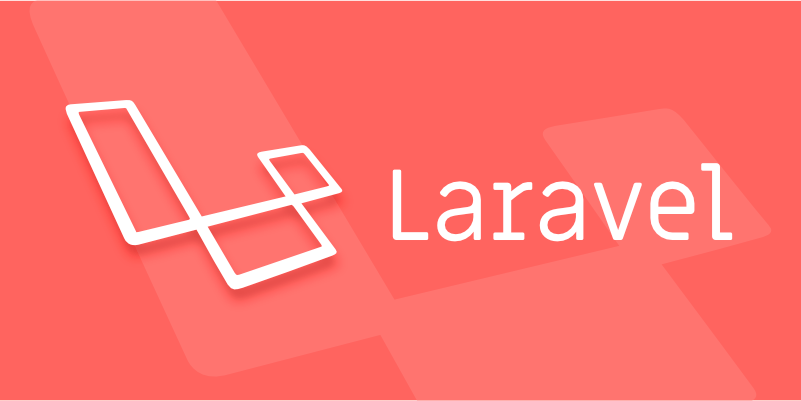Laravel Pint is a zero-configuration code style fixer that automatically enforces consistent PHP coding standards, especially in Laravel applications. 2. It comes pre-installed with Laravel 9 and can be installed in older versions or non-Laravel projects using composer require --dev laravel/pint. 3. Run Pint with ./vendor/bin/pint to automatically format code based on default rules derived from PSR-12 and Laravel's style guide. 4. Default formatting includes proper spacing, 4-space indentation, newline braces, correct case usage, and trailing commas in arrays. 5. Integrate Pint into development by running it manually before commits, configuring IDE plugins to run on save, or adding it to pre-commit hooks using tools like husky or lefthook. 6. Customize behavior by creating a pint.json file to override rules, specify a preset like "psr12" or "laravel", and define target paths, or use a .pint.php file for advanced PHP-based configuration. 7. Always commit code before running Pint to safely review changes, as it only alters formatting, not logic. 8. Integrate Pint into CI/CD pipelines using ./vendor/bin/pint --test to perform a dry run and fail the build if formatting issues are found. 9. Regularly running Pint ensures clean, consistent code with minimal effort, making it a simple and effective tool for maintaining code quality in PHP projects.

Laravel Pint is a zero-configuration code style fixer for PHP projects, especially Laravel applications. It automatically enforces a consistent coding style by analyzing your code and applying predefined rules. Here's how to use it effectively.

Install and Run Laravel Pint
Pint comes pre-installed with Laravel 9 by default. If you're using an older version or a non-Laravel project, you can install it via Composer:
composer require --dev laravel/pint
Once installed, you can run Pint using the following command:

./vendor/bin/pint
This will analyze and fix the code style of all PHP files in your project based on its default rules.
Understand the Default Behavior
Pint works out of the box without any configuration. It uses a set of sensible defaults based on PSR-12 and Laravel's own coding style. Common formatting rules include:

- Proper spacing around keywords and operators
- Correct indentation (4 spaces)
- Class and method braces on new lines
- Proper use of uppercase/lowercase for constants and keywords
- Trailing commas in arrays
You don't need to do anything to enable these — Pint applies them automatically.
Use Pint in Development Workflow
To keep your code clean during development, you can:
Run Pint manually before committing:
./vendor/bin/pint
Integrate it into your IDE. Many editors (like PHPStorm, VS Code) support running Pint on save via plugins or settings.
Add it to your pre-commit hooks using tools like
huskysimple-git-hooksorlefthook.
Example script in package.json (if using npm):
"scripts": {
"lint:fix": "pint"
}Then run:
npm run lint:fix
Customize Pint (Optional)
If you need to override the default rules, create a pint.json file in your project root:
{
"preset": "psr12",
"rules": {
"array_syntax": {
"syntax": "short"
},
"binary_operator_spaces": {
"default": "single_space"
},
"blank_line_after_opening_tag": true
},
"paths": [
"app/",
"database/",
"routes/",
"tests/"
]
}You can also use a .pint.php file for more advanced configuration using PHP syntax.
Common presets:
"laravel"(default)"psr12"
Choose one via the preset key if you want stricter PSR-12 compliance without Laravel-specific tweaks.
Key Tips
- Always commit your code before running Pint, so you can review changes.
- Pint is fast and safe — it only changes formatting, not logic.
- CI/CD integration: Add Pint to your pipeline to enforce style:
./vendor/bin/pint --test
This runs Pint in "dry run" mode and exits with an error if fixes are needed.
Basically, just run
pintregularly and let it handle the rest. It’s simple, effective, and keeps your Laravel code clean with zero effort.The above is the detailed content of How to use Laravel Pint for code styling?. For more information, please follow other related articles on the PHP Chinese website!

Hot AI Tools

Undress AI Tool
Undress images for free

Undresser.AI Undress
AI-powered app for creating realistic nude photos

AI Clothes Remover
Online AI tool for removing clothes from photos.

Clothoff.io
AI clothes remover

Video Face Swap
Swap faces in any video effortlessly with our completely free AI face swap tool!

Hot Article

Hot Tools

Notepad++7.3.1
Easy-to-use and free code editor

SublimeText3 Chinese version
Chinese version, very easy to use

Zend Studio 13.0.1
Powerful PHP integrated development environment

Dreamweaver CS6
Visual web development tools

SublimeText3 Mac version
God-level code editing software (SublimeText3)

Hot Topics
 Creating Custom Validation Rules in a Laravel Project
Jul 04, 2025 am 01:03 AM
Creating Custom Validation Rules in a Laravel Project
Jul 04, 2025 am 01:03 AM
There are three ways to add custom validation rules in Laravel: using closures, Rule classes, and form requests. 1. Use closures to be suitable for lightweight verification, such as preventing the user name "admin"; 2. Create Rule classes (such as ValidUsernameRule) to make complex logic clearer and maintainable; 3. Integrate multiple rules in form requests and centrally manage verification logic. At the same time, you can set prompts through custom messages methods or incoming error message arrays to improve flexibility and maintainability.
 Working with pivot tables in Laravel Many-to-Many relationships
Jul 07, 2025 am 01:06 AM
Working with pivot tables in Laravel Many-to-Many relationships
Jul 07, 2025 am 01:06 AM
ToworkeffectivelywithpivottablesinLaravel,firstaccesspivotdatausingwithPivot()orwithTimestamps(),thenupdateentrieswithupdateExistingPivot(),managerelationshipsviadetach()andsync(),andusecustompivotmodelswhenneeded.1.UsewithPivot()toincludespecificcol
 Sending different types of notifications with Laravel
Jul 06, 2025 am 12:52 AM
Sending different types of notifications with Laravel
Jul 06, 2025 am 12:52 AM
Laravelprovidesacleanandflexiblewaytosendnotificationsviamultiplechannelslikeemail,SMS,in-appalerts,andpushnotifications.Youdefinenotificationchannelsinthevia()methodofanotificationclass,andimplementspecificmethodsliketoMail(),toDatabase(),ortoVonage
 Understanding Dependency Injection in Laravel?
Jul 05, 2025 am 02:01 AM
Understanding Dependency Injection in Laravel?
Jul 05, 2025 am 02:01 AM
Dependency injection automatically handles class dependencies through service containers in Laravel without manual new objects. Its core is constructor injection and method injection, such as automatically passing in the Request instance in the controller. Laravel parses dependencies through type prompts and recursively creates the required objects. The binding interface and implementation can be used by the service provider to use the bind method, or singleton to bind a singleton. When using it, you need to ensure type prompts, avoid constructor complications, use context bindings with caution, and understand automatic parsing rules. Mastering these can improve code flexibility and maintenance.
 Strategies for optimizing Laravel application performance
Jul 09, 2025 am 03:00 AM
Strategies for optimizing Laravel application performance
Jul 09, 2025 am 03:00 AM
Laravel performance optimization can improve application efficiency through four core directions. 1. Use the cache mechanism to reduce duplicate queries, store infrequently changing data through Cache::remember() and other methods to reduce database access frequency; 2. Optimize database from the model to query statements, avoid N 1 queries, specifying field queries, adding indexes, paging processing and reading and writing separation, and reduce bottlenecks; 3. Use time-consuming operations such as email sending and file exporting to queue asynchronous processing, use Supervisor to manage workers and set up retry mechanisms; 4. Use middleware and service providers reasonably to avoid complex logic and unnecessary initialization code, and delay loading of services to improve startup efficiency.
 Managing database state for testing in Laravel
Jul 13, 2025 am 03:08 AM
Managing database state for testing in Laravel
Jul 13, 2025 am 03:08 AM
Methods to manage database state in Laravel tests include using RefreshDatabase, selective seeding of data, careful use of transactions, and manual cleaning if necessary. 1. Use RefreshDatabasetrait to automatically migrate the database structure to ensure that each test is based on a clean database; 2. Use specific seeds to fill the necessary data and generate dynamic data in combination with the model factory; 3. Use DatabaseTransactionstrait to roll back the test changes, but pay attention to its limitations; 4. Manually truncate the table or reseed the database when it cannot be automatically cleaned. These methods are flexibly selected according to the type of test and environment to ensure the reliability and efficiency of the test.
 Choosing between Laravel Sanctum and Passport for API authentication
Jul 14, 2025 am 02:35 AM
Choosing between Laravel Sanctum and Passport for API authentication
Jul 14, 2025 am 02:35 AM
LaravelSanctum is suitable for simple, lightweight API certifications such as SPA or mobile applications, while Passport is suitable for scenarios where full OAuth2 functionality is required. 1. Sanctum provides token-based authentication, suitable for first-party clients; 2. Passport supports complex processes such as authorization codes and client credentials, suitable for third-party developers to access; 3. Sanctum installation and configuration are simpler and maintenance costs are low; 4. Passport functions are comprehensive but configuration is complex, suitable for platforms that require fine permission control. When selecting, you should determine whether the OAuth2 feature is required based on the project requirements.
 Implementing Database Transactions in Laravel?
Jul 08, 2025 am 01:02 AM
Implementing Database Transactions in Laravel?
Jul 08, 2025 am 01:02 AM
Laravel simplifies database transaction processing with built-in support. 1. Use the DB::transaction() method to automatically commit or rollback operations to ensure data integrity; 2. Support nested transactions and implement them through savepoints, but it is usually recommended to use a single transaction wrapper to avoid complexity; 3. Provide manual control methods such as beginTransaction(), commit() and rollBack(), suitable for scenarios that require more flexible processing; 4. Best practices include keeping transactions short, only using them when necessary, testing failures, and recording rollback information. Rationally choosing transaction management methods can help improve application reliability and performance.






